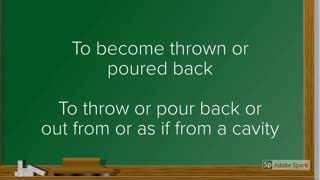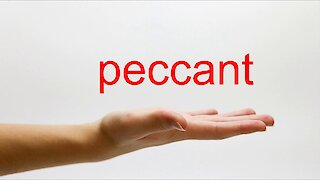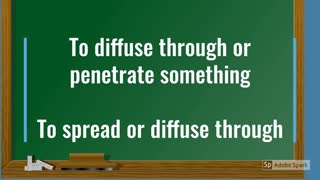Premium Only Content

Word of the Day : Garnish
Did You Know?
The purpose of Garnishing Food. ... Usually consisting of an edible component, garnishes brighten the plate, give a clue to the flavor of the meal, complement the taste of the dish or fill empty space on the plate. Garnishes can take many forms depending on the food they are decorating.
A garnish is a decoration or embellishment, often used with food. It is also the verb that means to do the decorating: you can garnish a baked fish with a garnish of lemon slices and parsley.Garnishes should always be edible - there may be laws depending where you are, but in general anything on your plate should be edible or very obviously not meant to be eaten (like a skewer or a paper wrapper). ... So probably the best garnishes are ones that look good and are pleasant to eat.
Although we now mostly garnish food, the general application of the "decorate" meaning is older. The link between embellishing an object or space and adding a little parsley to a plate isn't too hard to see, but how does the verb's sense of "garnishee," which refers to the taking of debtors' wages, fit in? The answer lies in the word's Anglo-French root, garnir, which means "to give notice, warning, or legal summons" in addition to "to equip or decorate." Before wages were garnished, the debtor would be served with a legal summons or warning. The legal sense of garnish now chiefly implies the taking of the wages, but it is rooted in the action of furnishing the warning.
Examples
"[Mariah] Carey pioneered featuring rappers on pop hits, and to date she has garnished 56 of her tracks with guest verses." — Billboard.com, 25 Apr. 2019
"Every day, problems that have fundamentally legal solutions—like a debt collector wrongfully garnishing hard-earned wages—derail the lives of people who are already struggling to make ends meet." — David Zapolsky, Fortune, 18 June 2019
-
 0:30
0:30
OddManOut
4 years agoWord of the Day : Arboreal
527 -
 0:31
0:31
OddManOut
4 years agoWord of the Day : Promulgate
1.21K -
 0:30
0:30
OddManOut
4 years agoWord of the Day : Colloquy
314 -
 0:30
0:30
OddManOut
4 years agoWord of the Day : Regurgitate
215 -
 0:30
0:30
OddManOut
4 years ago $0.01 earnedWord of the Day : Deflagrate
1051 -
 0:30
0:30
OddManOut
4 years agoWord of the Day : Alienist
209 -
 0:29
0:29
OddManOut
4 years agoWord of the Day : Pandiculation
73 -
 0:30
0:30
OddManOut
4 years agoWord of the Day: Peccant
390 -
 0:39
0:39
OddManOut
4 years agoWord of the day Vanilla
139 -
 0:29
0:29
OddManOut
4 years agoWord of the Day : PREMEATE
96